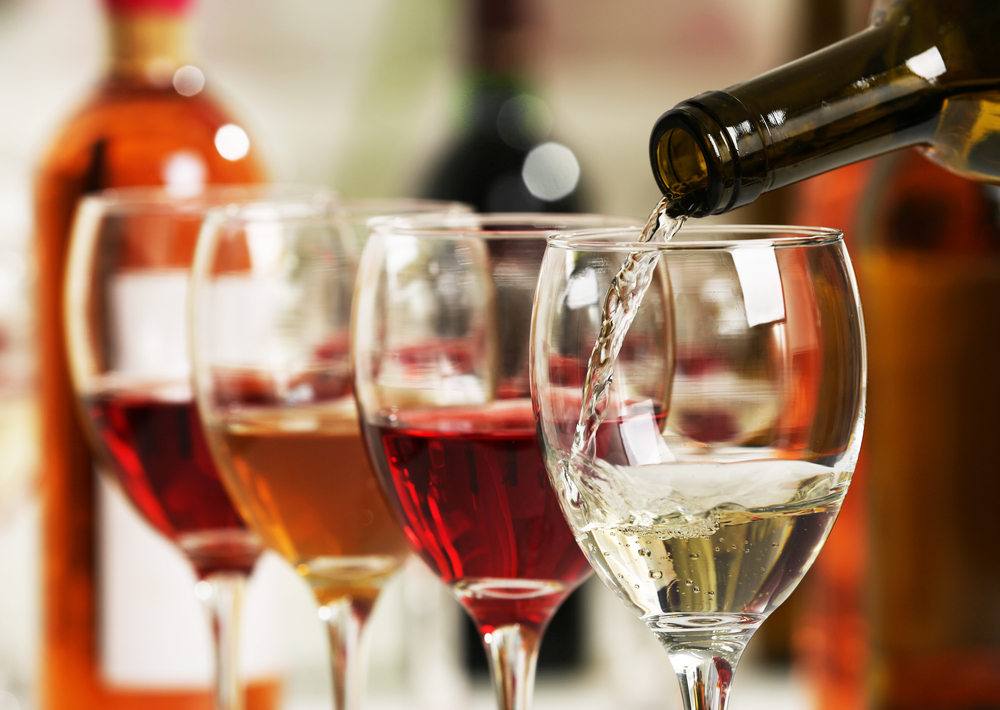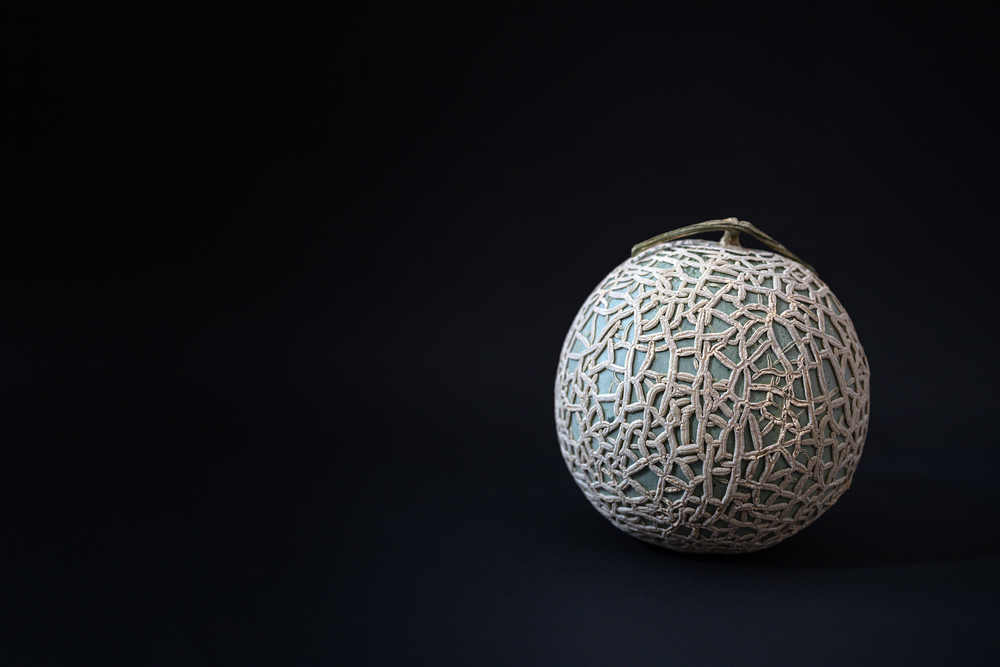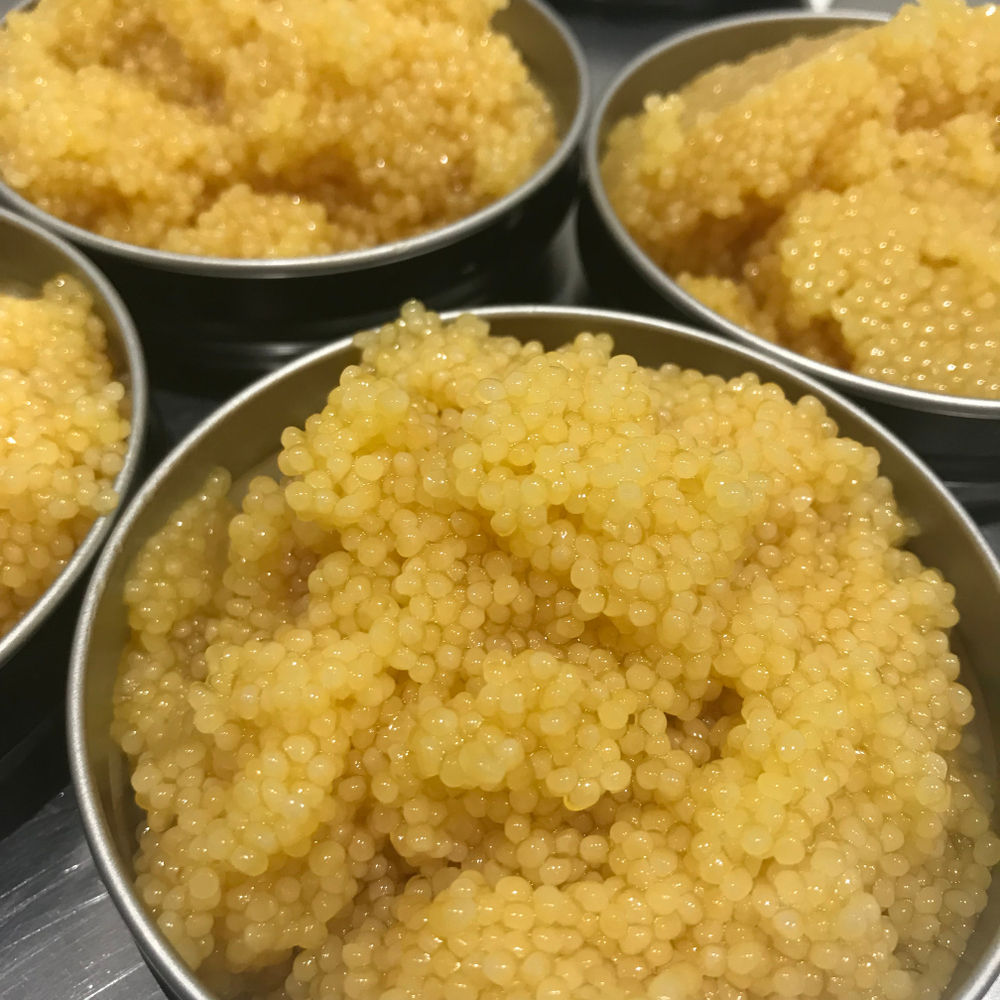Vanilla is a flavor that many people enjoy, but it’s also one of the most expensive spices in the world. There are several reasons why vanilla is so expensive, including the difficulty of growing and harvesting vanilla pods, the impact of weather and climate on crops, and the global vanilla market.
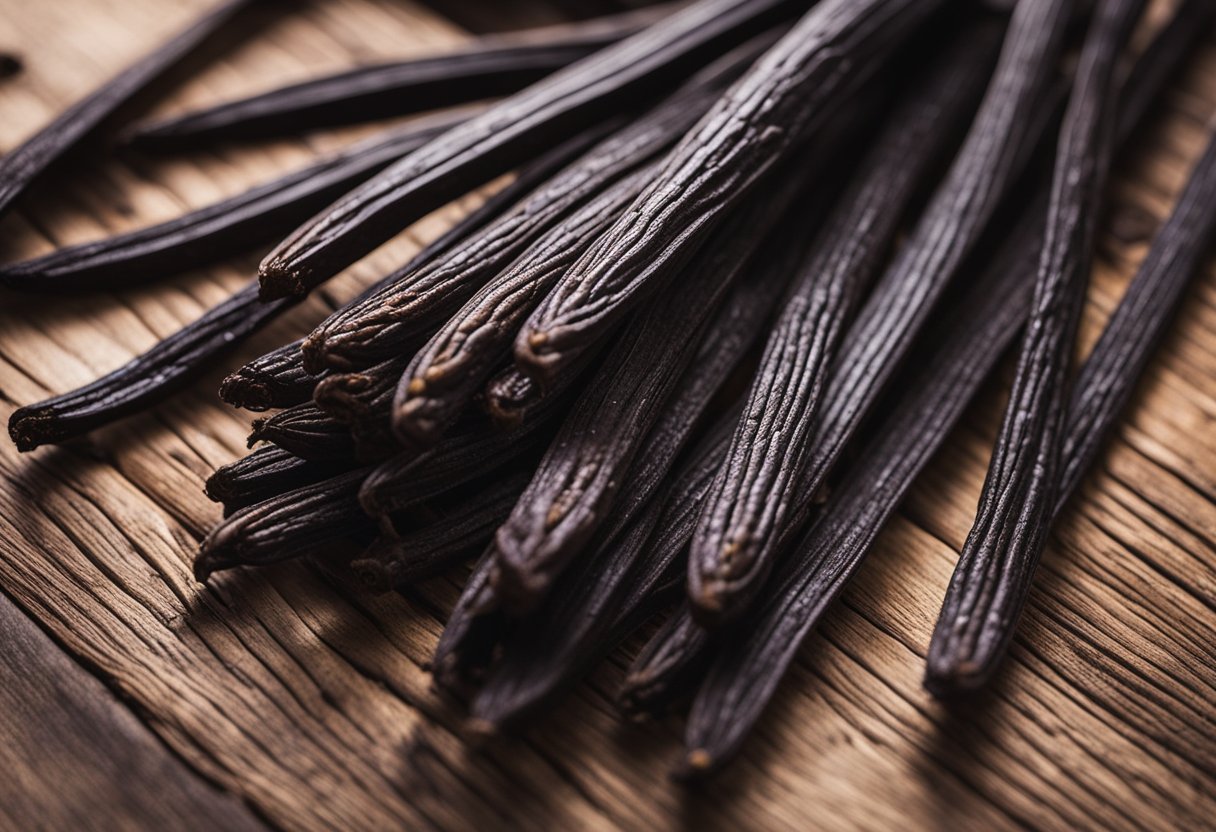
One of the main reasons why vanilla is so expensive is its rarity. Vanilla is derived from the seed pods of a specific type of orchid, which is difficult to grow and harvest.
Vanilla plants require specific conditions to grow, and they can take several years to produce pods. Additionally, the process of harvesting and curing vanilla pods is labor-intensive, which drives up the cost of production.
Despite its high cost, vanilla is a popular ingredient in cooking and baking, and it’s used in a wide range of products, from ice cream to perfume.
As a result, the global demand for vanilla has increased, which has also contributed to its high price. While there are artificial vanilla substitutes available, many people prefer the taste of natural vanilla, which further drives up its cost.
Key Takeaways
- Vanilla is one of the most expensive spices in the world due to its rarity and the difficulty of growing and harvesting vanilla pods.
- The global demand for vanilla has increased, which has also contributed to its high price.
- While artificial vanilla substitutes are available, many people prefer the taste of natural vanilla, which further drives up its cost.
The Rarity of Vanilla
Vanilla is one of the most popular flavors in the world. However, it is also one of the most expensive spices globally, second only to saffron. The high cost of vanilla is due to its rarity and labor-intensive production process.
Vanilla Orchids
Vanilla comes from the vanilla orchid, a flowering plant native to Mexico. The orchids grow on vines and produce flowers that bloom for only one day each year. The flowers are large and fragrant, but they are also delicate and require careful handling.
Hand-Pollination
The vanilla orchid is a finicky plant that requires hand-pollination. In the wild, the orchids are pollinated by a specific species of bee, but outside of their natural habitat, they must be pollinated by hand. This process is labor-intensive and requires skilled workers.
Harvest and Curing Process
Once the vanilla orchids have been hand-pollinated, the beans must be harvested and cured. The beans are picked when they are still green and then undergo a complex curing process that can take up to several months.
The curing process involves drying the beans in the sun during the day and wrapping them in blankets at night to sweat. This process is repeated until the beans are fully cured.
Overall, the rarity of vanilla is due to the fact that it is a labor-intensive crop that requires hand-pollination and a complex curing process. The high demand for vanilla and the limited supply also contribute to its high cost.
The Impact of Weather and Climate
Cyclones and Deforestation
Cyclones and storms have a significant impact on the vanilla industry, particularly in Madagascar, where the majority of the world’s vanilla is produced.
Cyclone Enawo, which hit Madagascar in March 2017, caused widespread damage to vanilla crops, resulting in a global shortage of the spice. This shortage led to a sharp increase in vanilla prices, which have remained high ever since.
In addition to natural disasters, deforestation is also a significant issue in Madagascar. The country has lost over 80% of its original forest cover, and this has had a severe impact on the vanilla industry.
Deforestation has reduced the amount of suitable land for growing vanilla, and it has also disrupted the pollination process, which is essential for vanilla production.
Climate Change
Climate change is another factor that is affecting the vanilla industry. Rising temperatures and changing weather patterns are making it more difficult to grow vanilla in some areas.
In addition, climate change is leading to more frequent and severe natural disasters, such as cyclones and storms, which can damage vanilla crops.
One of the ways that climate change is affecting the vanilla industry is through changes in rainfall patterns. In some areas, there is less rainfall than in the past, making it more difficult to grow vanilla. In other areas, there is more rainfall, which can lead to fungal diseases that can damage the vanilla crop.
Another way that climate change is affecting the vanilla industry is through changes in temperature. Vanilla requires a specific temperature range to grow, and if temperatures rise above or below this range, it can affect the quality and quantity of the crop.
Overall, weather and climate have a significant impact on the vanilla industry, and it is essential to take steps to mitigate these effects. This includes measures such as reducing deforestation, improving irrigation systems, and developing new varieties of vanilla that are more resilient to changing weather patterns.
The Global Vanilla Market
As of 2023, the global vanilla market is expected to grow from USD 0.96 billion to USD 1.42 billion by 2028, at a CAGR of 8.13% during the forecast period (2023-2028) [1]. The high price tag of vanilla can be attributed to several factors, including supply and demand, price fluctuations, and climate challenges.
Supply and Demand
Vanilla is a labor-intensive crop that requires a specific climate to grow. Madagascar, Indonesia, and Uganda are the largest producers of vanilla, with Madagascar producing over 80% of the world’s supply [2].
However, vanilla production in Madagascar has been affected by natural disasters, theft, and political instability, leading to a shortage in supply and driving up prices [3].
Additionally, the demand for vanilla has increased due to its numerous applications in the food and associated industries, further exacerbating the supply-demand gap.
Price Fluctuations
Historically, vanilla prices have been known to fluctuate due to supply and demand imbalances, with prices reaching an all-time high in 2017 [4].
This was due to a combination of factors, including a cyclone that hit Madagascar, which led to a shortage in supply, and increased demand for natural and organic products [5].
Vanilla prices have remained high since then, with prices in 2023 being ten times higher than they were a few years ago [3].
Additionally, the vanilla market has experienced bubbles, which are driven by specific reasons and coincide with specific events that contribute to the formation and rupture of the bubbles [6].
In conclusion, the global vanilla market is expected to continue to grow, with prices remaining high due to supply and demand imbalances, price fluctuations, and climate challenges. As a result, vanilla remains one of the more expensive spices traded on the international market.
[2] Kitchenous
[3] HowStuffWorks
[4] Business Insider
[5] HowStuffWorks
[6] Agricultural and Food Economics
Artificial vs. Natural Vanilla
Production of Artificial Vanilla
Artificial vanilla, also known as imitation vanilla extract, is made from synthetic vanillin, a compound that mimics the flavor of natural vanilla.
The production of artificial vanilla is relatively simple and cost-effective, which makes it a popular choice for manufacturers. Synthetic vanillin can be produced from various sources, such as lignin, a byproduct of the paper industry, or petroleum.
On the other hand, natural vanilla extract is derived from vanilla beans, which are grown in tropical regions such as Madagascar, Tahiti, and Indonesia. The process of growing and harvesting vanilla beans is time-consuming and labor-intensive, which contributes to the high cost of natural vanilla extract.
Taste and Aroma Differences
While artificial vanilla is a cheaper alternative to natural vanilla, it lacks the complex flavor and aroma of the real thing. Natural vanilla extract contains hundreds of flavor compounds that work together to create its unique taste and aroma, whereas synthetic vanillin only has a single flavor compound.
Furthermore, natural vanilla extract has a more flavorful and robust taste compared to artificial vanilla. It also has a more nuanced aroma that can enhance the overall taste of baked goods, desserts, and other food items.
In conclusion, while artificial vanilla extract is a cheaper and more accessible option, it cannot compare to the flavorful and aromatic qualities of natural vanilla extract. When it comes to flavorings, it is always best to use high-quality ingredients to achieve the best results in your cooking and baking.
The Role of Vanilla in Cooking
Vanilla is a popular flavoring agent used in many sweet dishes, desserts, and beverages. It is a versatile ingredient that enhances the taste of many dishes. In this section, I will discuss the common uses of vanilla and its substitutes.
Common Uses of Vanilla
Vanilla is a popular flavor used in various recipes, including cakes, cookies, and ice creams. It is used to add a rich, sweet flavor to these dishes. Vanilla is also used in puddings, cheesecake, and other desserts to enhance their taste. In addition, vanilla is used in many beverages, including coffee, tea, and milkshakes.
Vanilla flavor is obtained from the vanilla bean, which is a pod-like fruit that grows on the vanilla orchid. The vanilla beans are harvested and dried, and then the flavor is extracted using alcohol. The extracted vanilla flavor is then used in various dishes and beverages.
Substitutes for Vanilla
Vanilla can be an expensive ingredient, and sometimes it may not be available. In such cases, there are several substitutes that can be used to replace vanilla flavor. Some of the common substitutes for vanilla include:
- Almond extract: Almond extract has a similar flavor to vanilla and can be used as a substitute in many recipes.
- Maple syrup: Maple syrup can be used as a substitute for vanilla in some recipes, such as pancakes and waffles.
- Cinnamon: Cinnamon has a sweet and spicy flavor that can be used as a substitute for vanilla in some recipes.
- Coconut milk: Coconut milk can be used as a substitute for vanilla in some recipes, such as ice cream and pudding.
In conclusion, vanilla is a versatile ingredient that is widely used in cooking and baking. It is used to add a rich, sweet flavor to many dishes and beverages. However, if vanilla is not available or too expensive, there are several substitutes that can be used to replace it.
Vanilla Production Around the World
Vanilla is a labor-intensive crop that requires specific growing conditions and careful processing. The majority of the world’s vanilla supply comes from three countries: Madagascar, Mexico, and Indonesia. In this section, I will discuss the vanilla production in these countries.
Vanilla Production in Madagascar
Madagascar is the largest producer of vanilla, accounting for around 80% of the world’s supply. Vanilla production in Madagascar is centered around the northeastern region of the country, particularly the Sava region. The vanilla grown in Madagascar is known for its unique flavor profile, which is fruity and floral.
Vanilla production in Madagascar is primarily done by small-scale farmers who grow vanilla as a cash crop. The vanilla vines take three to four years to mature, and once the beans are harvested, they go through a lengthy curing process that involves sun-drying during the day and sweating in airtight containers at night.
The process can take up to six months, and the beans must be carefully monitored to prevent mold growth.
Vanilla Production in Mexico
Mexico is the birthplace of vanilla, and it has been cultivated there for centuries. Mexican vanilla is known for its bold, smoky flavor profile, which is different from the fruity and floral flavor of Madagascar vanilla.
However, Mexican vanilla production has declined significantly in recent years due to competition from cheaper, synthetic vanilla and a devastating plant disease called “vanilla wilt.”
Mexican vanilla production is centered around the state of Veracruz, where the climate and soil conditions are ideal for growing vanilla. Like in Madagascar, vanilla production in Mexico is primarily done by small-scale farmers who grow vanilla as a cash crop.
Vanilla Production in Indonesia and Papua New Guinea
Indonesia and Papua New Guinea are also significant producers of vanilla, although they account for a smaller percentage of the world’s supply compared to Madagascar and Mexico. The vanilla grown in these countries is known for its woody and smoky flavor profile.
In Indonesia, vanilla production is centered around the island of Java, particularly the city of Sukabumi. The vanilla vines are grown in the shade of other trees, which helps protect them from the harsh tropical sun. The curing process for Indonesian vanilla is similar to that of Madagascar vanilla.
In Papua New Guinea, vanilla production is primarily done by small-scale farmers who grow vanilla as a cash crop. The vanilla vines are grown in the shade of other trees, and the curing process is similar to that of Madagascar vanilla.
Overall, vanilla production is a complex and labor-intensive process that requires specific growing conditions and careful processing. The majority of the world’s vanilla supply comes from Madagascar, Mexico, and Indonesia, with each country producing vanilla with a unique flavor profile.
Regulation and Branding of Vanilla
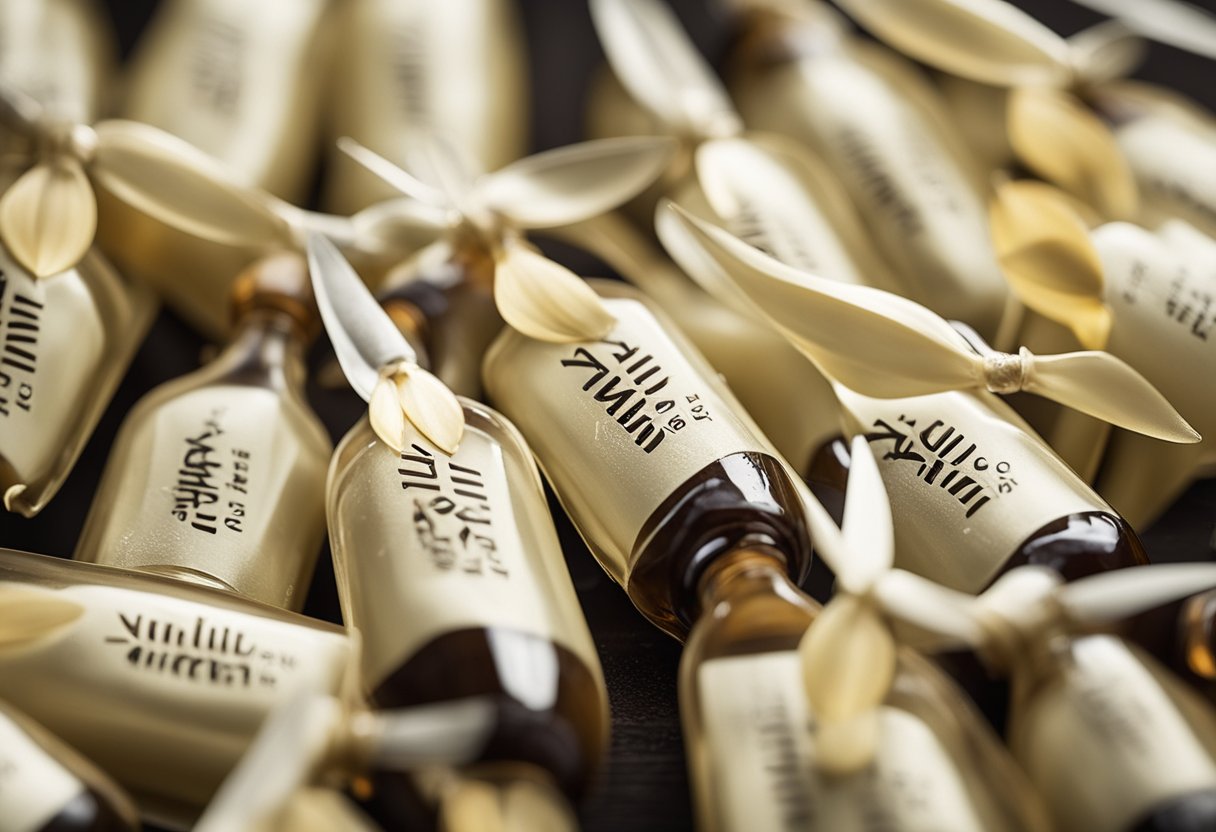
Vanilla is a highly regulated flavoring ingredient in the food industry. The FDA requires that any product labeled as “vanilla” must contain natural vanilla flavor derived from vanilla beans.
However, products labeled as “vanilla-flavored” may contain a combination of natural and artificial flavors. This regulation ensures that consumers are not misled by false labeling and that the quality of the product is maintained.
Branding also plays a significant role in the price of vanilla. Brands that use high-quality vanilla beans and follow strict production processes are likely to charge a premium for their products. This is because the cost of producing high-quality vanilla is significantly higher than producing lower quality vanilla.
Additionally, some brands may use marketing tactics to create a perception of higher quality, which can also increase the price of their products. For example, a brand may use terms like “pure” or “natural” to imply that their product is of higher quality, even if the actual difference in quality is minimal.
Overall, the regulation and branding of vanilla contribute to its high price. While regulations ensure that consumers are getting what they pay for, branding can create a perception of higher quality that justifies a premium price.
Related posts:
Frequently Asked Questions
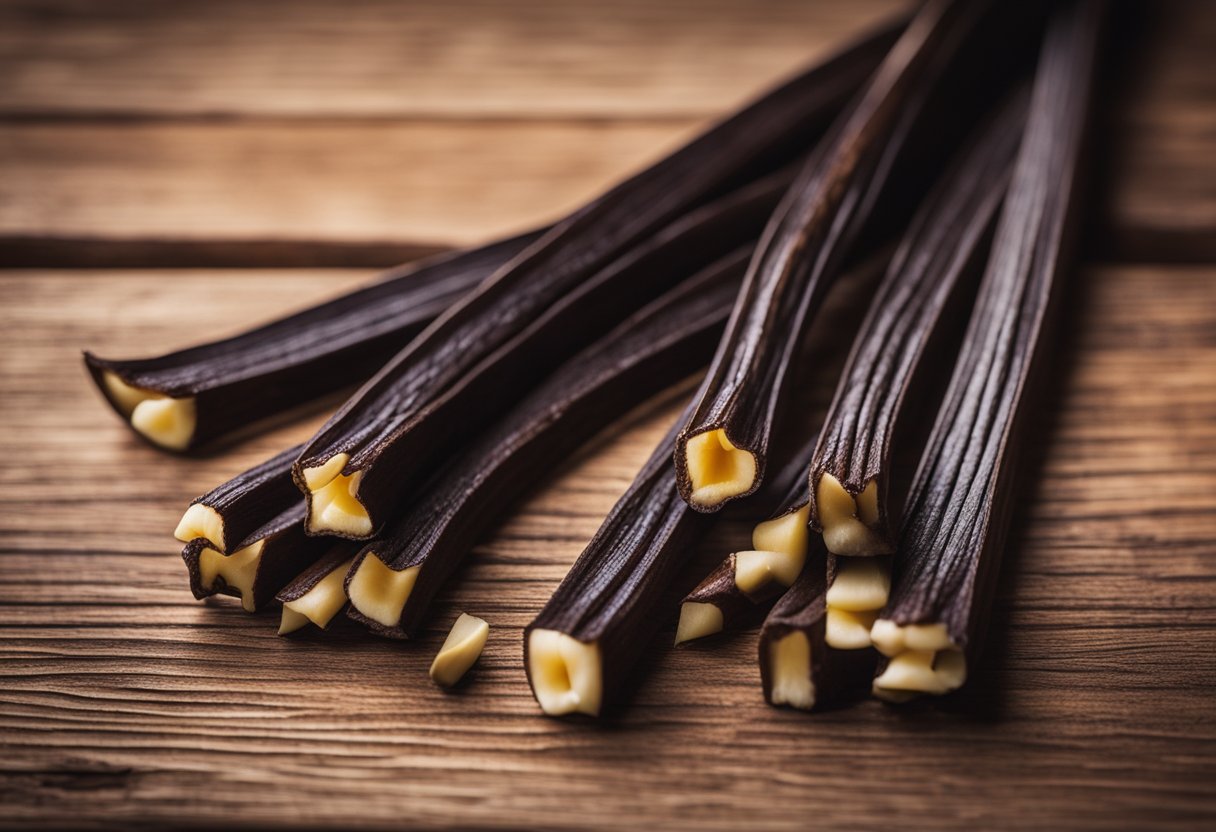
What factors contribute to the high cost of vanilla?
Vanilla is one of the most expensive spices in the world due to several factors. First, vanilla is a labor-intensive crop that requires hand-pollination and harvesting. Second, vanilla beans are only grown in certain regions, such as Madagascar, Tahiti, and Indonesia, making it a rare commodity.
Third, vanilla crops are often affected by natural disasters and climate changes, which can lead to a decrease in supply and an increase in price.
How does the price of vanilla compare to other spices?
Vanilla is the second most expensive spice in the world, after saffron. The high cost of vanilla is due to the factors mentioned above, including the labor-intensive process of growing and harvesting the beans, as well as the limited growing regions.
In comparison, other spices such as cinnamon, ginger, and black pepper are much cheaper.
What is the current price of vanilla extract?
As of October 11, 2023, the price of vanilla extract varies depending on the brand and quality. However, due to the high cost of vanilla beans, the price of vanilla extract has significantly increased in recent years. According to Allrecipes, the price of vanilla extract has exploded over the past few years.
Why is Mexican vanilla cheaper than other types of vanilla?
Mexican vanilla is often cheaper than other types of vanilla because it is made from a different species of vanilla bean, known as the Bourbon vanilla bean.
This bean is grown in Mexico and has a slightly different flavor profile than the Madagascar vanilla bean, which is the most commonly used type of vanilla bean. Additionally, Mexican vanilla may not have the same quality standards as other types of vanilla, which can also contribute to its lower price.
Is there a difference in quality between expensive and cheap vanilla?
Yes, there can be a difference in quality between expensive and cheap vanilla. Expensive vanilla is often made from higher quality vanilla beans that have been carefully harvested and processed.
The flavor of expensive vanilla is often more complex and intense than cheap vanilla. On the other hand, cheap vanilla may be made from lower quality beans or may contain artificial flavors and additives.
Will the price of vanilla ever decrease?
It is difficult to predict whether the price of vanilla will ever decrease. The factors that contribute to the high cost of vanilla, such as the labor-intensive process and limited growing regions, are unlikely to change.
However, new technologies and farming techniques may help to increase the supply of vanilla beans and reduce the price in the future.




